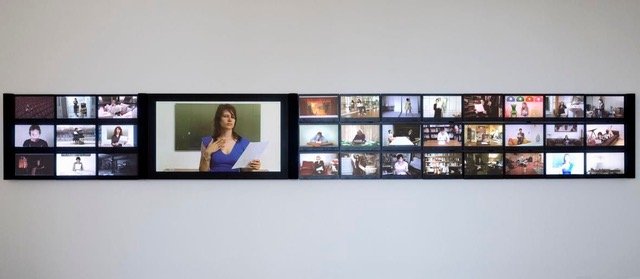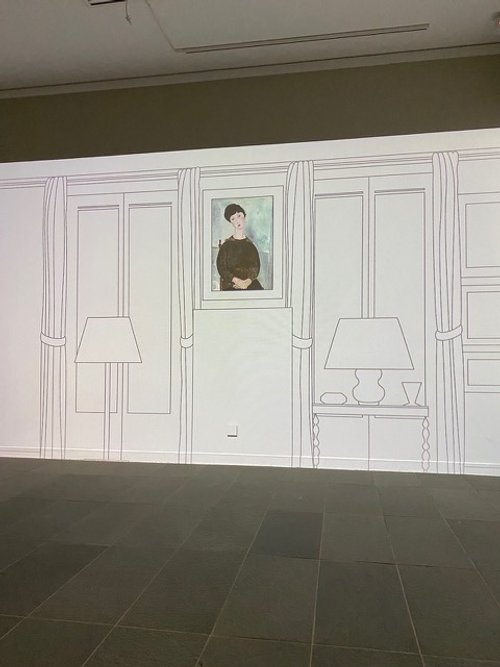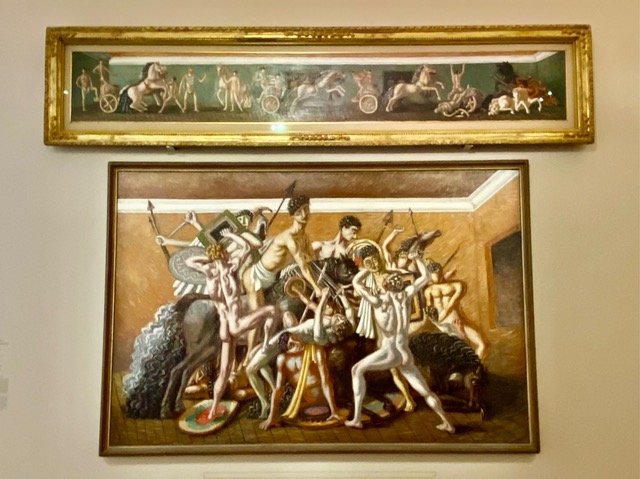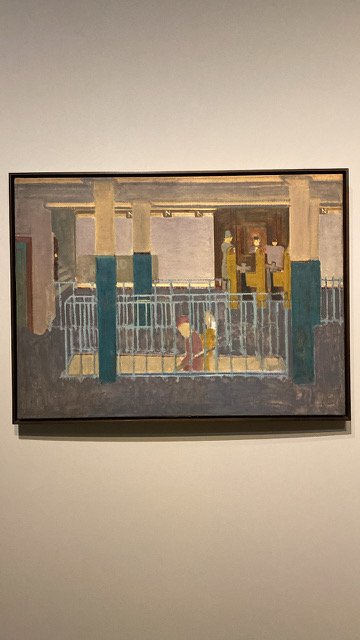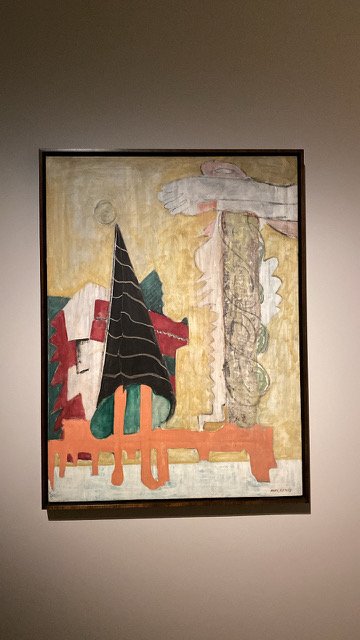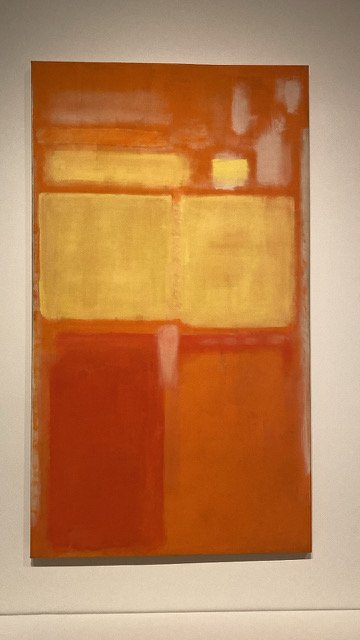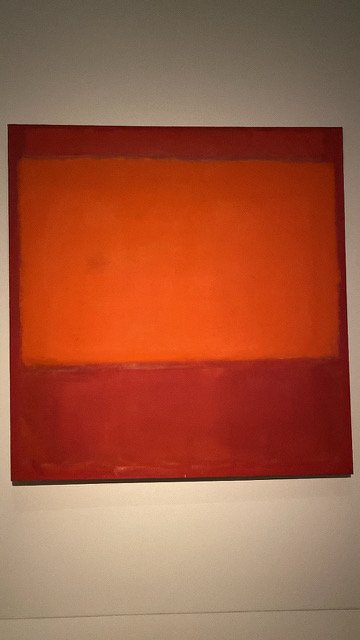Paris: a potpourri of possibilities
Bienvenue and welcome back to Musée Musings, your idiosyncratic guide to Paris and art. I had a very full week. I had a lot of catching up to do! One day, I walked over to the Musée Picasso to see an exhibition on the art dealer, Léonce Rosenberg, Paul Rosenberg’s older but definitely not wiser, brother. I finally made it to the Fondation Louis Vuitton for the Mark Rothko retrospective. Too much of anything, even a good thing, can be exhausting. I’ll tell you how I managed to avoid over saturation. Another day, Georges Hugo was the subject of an exhibition at his grandfather’s house - the Maison Victor Hugo. It’s an exhibition which answers the question: is it possible to have everything - name, fame, money, talent and still end up broke and alone. Finally, without a reservation, which I do NOT recommend, I went to the Musée Zadkine and saw a very moving exhibition on the work of the sculptor Chana Orloff.
In between museum exhibitions, I attended my first Mystery Book Club meeting for the year. The book we read, ‘Everyone in my family has murdered someone,’ wasn’t my favorite but our discussion was lively and thoughtful. I also began reading Book IV of A la recherche du temps perdu, Sodome et Gomorrhe (Cities of the Plain). The first 40 pages considers botany and non-sexual fertilization, homosexuality and Jewishness. With sentences going on for pages and paragraph indents a rarity!
Like I said, it was a full week. Before I tell you about those exhibitions, I want to share this tidbit. You may remember that I became a bit obsessed with Sophie Calle whose exhibition at the Musée Picasso ended two days before I returned from San Francisco. It was my sole source of remorse when I decided not to return before the end of January (well that and no more galettes des rois in patisseries).
As I was researching Calle, I couldn’t help but puzzle over the fact that when she represented France at the Venice Biennale in 2007, Daniel Buren was the curator of her exhibition. Although I wanted to know more. I didn’t pursue it at the time. But I didn’t forget it either. Anyhow, last week, when I was doing research on Daniel Buren, I came across a reference to Sophie Calle’s Venice exhibition. This time I did not put it aside.
As you may remember, Calle’s inspiration for her exhibit came from a breakup email she received from her boyfriend. The email ended with: ‘Take care of yourself.’ Which she did by asking 107 women, chosen for their various areas of expertise, to interpret the letter from their perspectives. Then Calle needed someone to help her arrange all the letters and video responses she received. She needed a curator. Turns out that artists who represent France at the Venice Biennale get to choose their own curators. And Calle being Calle, she did that by placing this ad in several newspapers, “Artist representing France at the Venice Biennale is looking for any enthusiastic person who can fill the function of exhibition curator.” (Fig 1)
Figure 1. Take Care of Yourself, Sophie Calle, French Pavilion, Venice Biennale, 2007
She received 200 applications, among them, one from Daniel Buren! Selected, he, “tried to help by working on the envelope, on the pavilion itself, on the presentation …of the different elements of the work…” Don’t you just love unexpected connections?
Now to the Musée Picasso, for an exhibition entitled In the Apartment of Léonce Rosenberg. (until 19 May) In 1928, the art dealer Léonce Rosenberg bought a huge apartment in a new building in the 16th arrondissement. He commissioned different artists to decorate the rooms. (Fig 2) The decorative panels were in place for barely one year. Although his gallery wasn’t closed by the Nazis until 1942, he had already lost everything, including this apartment and those paintings in the financial crisis of 1929.
Figure 2. Léonce Rosenberg’s Dining Room in apartment on rue de Longchamp, Paris
There have been several exhibitions in the past few years that have recreated particular spaces and the works of art created specifically for them. A few years ago, at the Fondation Louis Vuitton, it was the music salon decorated by Maurice Denis (Fig 3) and the central staircase decorated by Pierre Bonnard for Ivan Morozov’s Moscow mansion that were on display. More recently, at the Musée de l’Orangerie, an exhibition on Modigliani and his dealer, Paul Guillaume, recreated (but only virtually) the works of art that adorned the walls of Guillaume’s grand home. (Fig 4)
Figure 3. Recreation of Salon decorated by Maurice Denis for Ivan Morozov’s Moscow Mansion
Figure 3a. Salon decorated by Maurice Denis for Ivan Morozov’s Moscow Mansion
Figure 4. Recreation of where Modigliani’s portrait was placed in Paul Guillaume’s home
Figure 4a. Photo of Paul Guillaume’s home with paintings, sculptures and furniture
Léonce Rosenberg’s apartment was transformed into a “total work of art”. Each room, from the living room to the smoking room; from Mme Rosenberg’s boudoir to their daughters’ bedrooms, was decorated by a different artist. Among them, Giorgio de Chirico, Francis Picabia (Figs 5, 6) and Fernand Léger, as well as lesser known, indeed now unknown artists of the early 20th century. Picasso wasn’t among the artists asked to contribute. He wouldn’t have had he been asked. Picasso and other artists, like Georges Braque who actually punched Rosenberg at the Hotel Drouot auction house in 1921, were angry that Rosenberg had profited when rival gallery owner, the German Daniel-Henry Kahnweiler was forced to flee Paris at the beginning of World War I. All of the hundreds of paintings and drawings in his gallery, by artists like Braque, Gris, Léger and Picasso were “placed under sequestration by the French administration as ‘enemy property’.” After the war, Kahnweiler never succeeded in regaining possession of his works. Instead, they were sold at auction in four sales, from 1921 to 1923. And this is where Rosenberg comes in. He had gotten himself appointed expert in escrow sales. And that was how he profited from another gallery owner’s bad fortune. As expert, he manipulated the prices of the paintings and then flooding the market with them, which lowered their prices. Kahnweiler suffered and so did the artists he represented. Not a good move for a gallery owner whose focus was on contemporary art. Picasso once described paintings as “instrument(s) of war against the enemy. And which should not be made to decorate apartments.” Guess Rosenberg never got the memo. Or this one either: What goes around, comes around.
Figure 5. Giorgio de Chirico for Léonce Rosenberg’s apartment, rue du Longchamp
Figure 6. Francis Picabia for Léonce Rosenberg’s apartment rue de Longchamp
The Mark Rothko retrospective at the Fondation Louis Vuitton (until 2 April) takes over the entire museum. Of course it does, his paintings are huge. Well, except the ones from early in his career. The exhibition begins with a room filled with these early, figural paintings. (Fig 7) Subway scenes with solitary figures. In the next room are his allegorical paintings inspired by Aeschylus and Nietzsche. (Fig 8) By the time we get to Rothko’s Classic paintings, those huge rectangular shaped paintings, with undefined contours and radiant colors, arranged in two or three registers, we’re ready! He started painting those in 1950 and continued to paint them until his death, by suicide, in 1970. (Figs 9, 10)
Figure 7. Subway Scene, Mark Rothko, 1938
Figure 8. Sacrifice of Iphigenia, Mark Rothko
Figure 9. Multiform, Mark Rothko
Figure 10. Classic Mark Rothko
When I arrived in the first room of his Classic paintings, I didn’t quite know how to proceed, how to avoid retina fatigue with all those huge vibrating canvases. So, I tagged along with a group and listened to a guide explain how Rothko wanted us to look at his wor. She said don’t look at everything, chose a canvas or two in each room, and spend time in front of it/them. Which I did and which I urge you to do. (Figs 11, 12)
Figure 11. One of the Rothko paintings I got ‘into’
Figure 12. The Rothko they got into
Beyond single works of vibrant colors, my favorites were the panels Rothko created for specific locations - like the Seagram Murals, the Rothko Chapel in Houston (here in video), the Rothko Room at the Phillips Collection in Washington D.C. - the first museum to have a space dedicated to Rothko and the only which opened during his lifetime. His final panels, for the UNESCO headquarters in Paris are here, too. (Figs 13 - 16) Although he abandoned the project, the space was to have included sculptures by Giacometti. That’s how the Fondation displays the panels. See this exhibition if you are here. If it’s a nice day, walked through the Jardin des Plantes, included with your ticket.
Figure 13. Seagram Murals, Mark Rothko
Figure 14. Rothko Chapel, Houston, Texas
Figure 15. Philips Collection (D.C.) Mark Rothko
Figure 16. UNESCO headquarters project with statues by Giacometti, Mark Rothko
Figure 16a. Detail from UNESCO headquarters project with statues by Giacometti, Mark Rothko
Saturday morning usually finds me at the Café Mulot in the Maison Victor Hugo, for a café with Barb and Erin. This Saturday, I stayed to see the temporary exhibition on the paintings and drawings of Georges Hugo, the grandson of Victor Hugo. (Fig 17) Titled ‘The art of being a grandson’ (until 10 March) is a reference to a book of poems his grandfather wrote, ‘The Art of being a grandfather.’ Georges Hugo was wealthy and talented. His was a life of adventures and accomplishments. He was in the marines for three years as a young man and in the army for another three years 20 years later, during the First World War. Drawings and sketches of both experiences are on display. He participated in two sailing events at the 1900 Olympics, winning a silver medal in one and a bronze in the other. There is one lovely portrait of his grandfather descending the stairs at one of his homes. He lived in Florence with his second wife and there are paintings and sketches of Florence and Siena and Venice. And yet, and yet. According to Gérard Audinet, the director of Victor Hugo’s houses in Paris and Guernsey, “He (Georges Hugo) was prodigal, he really liked women, alcohol, gambling, he was a spendthrift, quarrelsome, brawling, he sometimes defended the reputation of Victor Hugo with his fists.” So maybe you won’t be surprised to learn that in 1925, at the age of 57, in poor health, impoverished and in debt, Georges Hugo died of pulmonary congestion, alone, in a modest boarding house. (Figs 18 - 22)
Figure 17. L’Art d’être grand-père, Victor Hugo in photo with grandchildren, Georges & Jeanne
Figure 18. A marine, sketch, Georges Hugo
Figure 19. Battle Scene, First World War, Georges Hugo
Figure 20. Siena, Georges Hugo
Figure 21. Victor Hugo descending the stairs at Hauteville House, Georges Hugo
Figure 22. Portrait of his wife Dora from behind, Georges Hugo
I saw one more exhibition this week. At the Musée Zadkine on rue d’Assas. It’s a simple museum, you might say almost artisanal. It was exactly the right venue for an exhibition on the work of the sculptor, Chana Orloff (until 31 March) (Figs 23, 24) whose life seems completely improbable. She was born in 1888, emigrated with her family from the Ukraine to Israel when she was 8. Then, in 1910, at age 22, she came to Paris to earn a dressmaker’s diploma. After working for the Paquin fashion house for a couple years, she changed course and studied sculpture. By 1914, she was exhibiting her work. She married, had a son and became a widow all in three years. From 1920 to 1940, she was a successful artist in Paris, living in an architect designed home/studio.
Figure 23. Photo of Chana Orloff
Figure 24. Chana Orloff in her studio
She became a Chevalier de la Légion d’honneur in 1925, a French citizen a year later. Of course, everything changed in 1940 when the Nazis invaded. Orloff first tried to emigrate to the U.S.A. When that didn’t work, she and her son went to Grenoble, in the free zone. When that fell to the Nazis, she and her son fled to Switzerland. She returned to Paris after the war. Her studio had been ransacked and looted. Her efforts at restitution were unsuccessful. From the mid-1940s until 1968, when she died at age 80, she continue to work in both Paris and Israel (where she died, where she is buried).
The tiny rooms in this museum are each given over to a different theme - there is a room of portraits, another of Mothers and Children, a third of birds and fish. In Zadkine’s studio is a huge statue by Chana of a mother lifting her child high above her head. It’s a memorial to a 31 year old woman who died during Israel’s war of independence in 1948. (Figs 25-29) Lifting her young child to the sky has been interpreted as both a gesture of hope for the future and an acknowledgement of the sacrifices required to get there. Orloff’s studio is near Zadkine’s and is only open by appointment. I plan to go soon.
Figure 25. Ida Chagall, Chana Orloff, 1923
Figure 26. Anaïs Nin, Chana Orloff, 1934
Figure 27. Mother & Child, Chana Orloff
Figure 28. Turkey, Chana Orloff
Figure 29. Mother & Child, Chana Orloff
Figure 29a. Mother & Child,photograph, Chana Orloff
All in all, it was my kind of week! Thanks so much to those of you who sent comments about last week’s post, for which I am so very grateful. Gros Bisous, Dr. ‘B’
New comment on Back in the High Life Again:
Bienvenue à Paris! Do you sometimes listen to Tony Bennett sing « I left my heart in San Francisco » ? My favorite aunt who left me her exquisite jewelry lived in SF for most of her life. Thank you for the photos of the Bon Marché and Daniel Buren’s displays. When in Paris I too walk there and marvel. Brenda
New comment on San Francisco, a Cultural Cornucopia:
The DeYoung fashion exhibition looks a thousand times better than the Met's current Women Dressing Women show which I visited last week; very disappointing so I wish I could get to San Francisco to see the DeYoung. Thanks for your great pix. Maribeth
New comment on ‘Aux Beaux Carrés : travaux in situ’:
Amazing and so informative once again! Like you, looking at art is my greatest enjoyment.Thank you. Shirley
I also saw those colones de Buren when I was in Paris. I had no idea what or why they were there. Your photos are fantastic of the exhibit. It’s “almost” like being there. Enjoy your sweater❤️ Deedee
New Comment on Proust Exhibition Reviews: Dear Beverly, I have finally had some time to sit and read (your Proust articles). They are really wonderful, and I’ve now signed up for your mailings so I don’t miss new ones. Your articles make Proust come alive, along with his era, the people around him, and his Paris. And the photos of the art works are splendid. I hadn’t realized the connection of Swann with the Ephrussis and the Camondos. I wish I had read these essays much earlier in our joint Proust wanderings.… Allan, Paris
Musée Carnavalet: Marcel Proust A Parisian Novel
Exhibition at Musée d’art et d’histoire du Judaïsme
Proust Du côté de la mère
Part 1:
Whats so wrong with being a mamas boy?
Part 2:
Exhibition at Bibliothèque Nationale de France,
Marcel Proust. La fabrique de l’oeuvre
If you can eat it, its not art.
Copyright © 2024 Beverly Held, Ph.D. All rights reserved
Dear Reader, I hope you enjoyed reading this article. Please sign up below to receive more articles plus other original content from me, Dr. B. Merci!
And, if you enjoyed reading this review, please consider writing a comment. Thank you!

